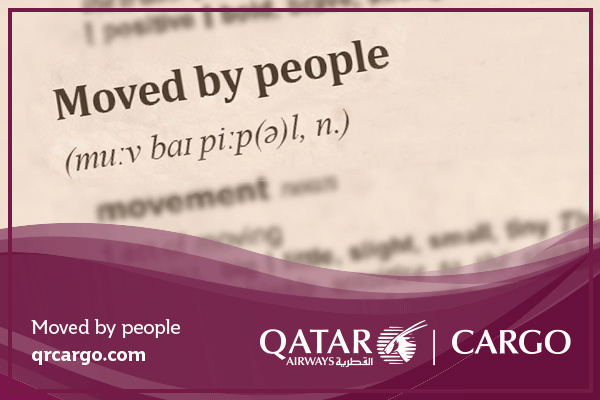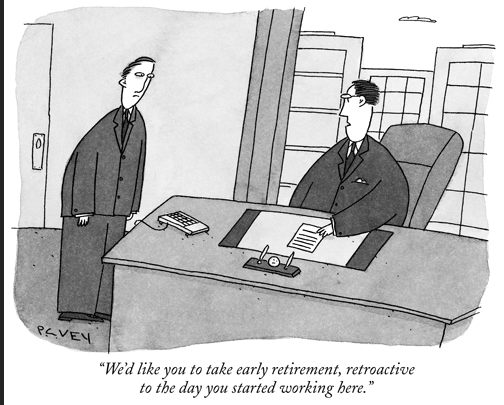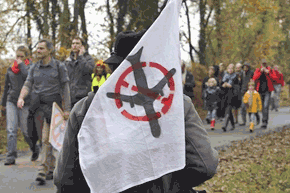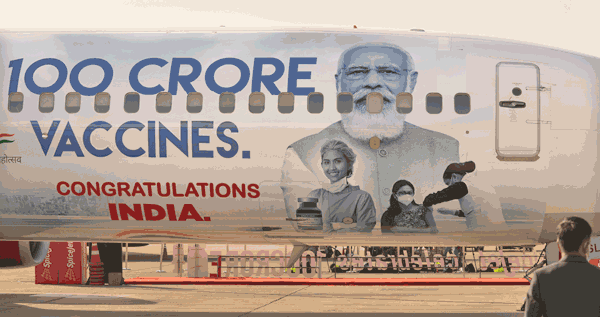
 |
| |
 |
 #INTHEAIREVERYWHERE |
| Vol. 20 No. 43 | Monday
November 8,
2021 |
| |
 |
Finnair, founded 98 years ago on November 1, 1923, and branded Aero OY, started operations with a single Junkers 13 aircraft. But for us, Finnair began 50 years ago at JFK International, when Vinnie Pannullo was the AY cargo guy and then later Kari Tikkanen came into the picture and carried Finnair Cargo for close to 20 years into modern times. In HEL, Eero Ahola was a grand master of the cargo form and was both a great man and a good friend at Finnair as was Leif Lundstrom. Along the way Erik Byman, Leevi Ekman, Pertti Mero and Pasi Nopanen opened doors everywhere. After the big thaw in Russia, as the Berlin Wall fell, Finnair had the ticket to discover a brave new world. The atmosphere was electric, including travel from Helsinki to the former Soviet Union by air or bus via Vyborg (Little Helsinki) and across the water to Tallinn where Skype was founded, and elsewhere in the emerging Baltic States. Helsinki to Tallinn and onto Moscow and beyond—the early 1990s still shimmer in memory as a thrilling journey to adventure and discovery. TransRussia, a trade show held in Moscow at the VVR every year was always a particularly enlightening experience. The road into Moscow from the airport had some steel barricades in the center of the highway and a small marker in Russian recalling the furthest penetration into Russia by the Germans in WW II, the spires of the Kremlin faintly visible off in the distance. The cannons Napoleon left in retreat from Moscow were still on sentry duty at an entrance to the Kremlin. The salmon-colored home of Chekhov in Moscow. The breathtaking afternoons that turned into evenings at The Seurasaari Open Air Museum in the middle of Helsinki, reached by walking across a fretted white bridge, where homes and artifacts and boats from Lapland and other locations in Finland, some hundreds of years old have been carefully brought and preserved forever. Finland also produced Eero Saarinen who designed The Jefferson Arch in St. Louis and, of course the TWA Terminal at JFK International, which is now a hotel. But in 1939, Finnair was on display at The New York World's Fair promoting planned scheduled services from Helsinki to New York City for 1940 via four-engined, high-flying Focke-Wulf 200 Condor passenger aircraft. In 1938, an FW-200 flew nonstop from Berlin to New York City scaring the hell out of Pan Am, which operated big lumbering Boeing B314 flying boats across the pond. Minus the world at war, Finnair would have been flying non-stop, HEL-LGA in 1940! So happy birthday Finnair and heartfelt thanks for the memories. May you always continue as a genuine treasure of an airline, not only for your accomplishments, but also for your inspirational independence and style. |
|
“We are thrilled to implement important technology for Air Canada Cargo and are excited about the role it will play in advancing the industry toward the digitization of processes, and indeed our business as a whole”, said Matthieu Casey, Senior Director, Global Sales and Revenue Optimization as Canada’s largest airline went live with its air cargo Application Programming Interface (API) solution. Plenty of enhanced benefits as the solution takes off to make shipping easier with a schedule of additional APIs ahead and in 2022. “Our API benefits Air Canada Cargo’s valued customers who increasingly will able to take advantage of the many benefits the solution provides,” Matt continued. API in a nut shell streamlines manual interactions such as quoting, booking, scheduling, and track and trace requests by improving connectivity of several different systems and processes to offer an enhanced booking flow. “By being directly integrated with Air Canada Cargo, customers are able to reduce the amount of time taken to complete a booking or AWB, resulting in improved efficiency.” More, Click here |
 |
 |
 While you were sleeping, getting back to normal after surviving the worst, thank God, a reality check shows that there are still a lot of people out there that don’t want airports in the first place. In the picture recently, demonstrators in Western France protest a project to build an international airport in Notre-Dame-des-Landes.  According
to Eraldo Souza dos Santos, a lecturer in global history at the University
of Potsdam: According
to Eraldo Souza dos Santos, a lecturer in global history at the University
of Potsdam:“The anti-airport movement has gone global.” Late last month, just two weeks before the start of that United Nations’ Climate Change Conference in Glasgow, an unusual organization commemorated its fifth anniversary: Stay Grounded, a group founded in 2016, is an international activist network of more than 170 smaller protest movements from across the globe. “Through mutual support and exchange of experiences,” dos Santos says “it hopes to inspire and guide collaboration around the shared goal that brings its members together—namely, reducing “aviation and its negative impacts. “In the years since Stay Grounded started work, it has made a case for seeing anti-airport social movements as a truly global phenomenon. “From Peru and Uganda to the United States and India, disparate groups of citizens have organized against the environmental and local impacts of airport land development. “Stay Grounded’s research has so far investigated 80 airport-related conflicts and identified 300 more for further investigation. “So far,” dos Santos said,” the struggle against airport projects is far from a unified one. “But Stay Grounded and groups like it, including the Global Anti-Aerotropolis Movement and the U.K-based AirportWatch, are actively working to change that by building linkages between similar movements. “What is notable is that they’ve displayed an ever-growing capacity to unite actors from across the political spectrum. “The movement’s top-line, single goal,”dos Santos insists is —a moratorium on airport construction and expansion. “They seek to reduce or prevent air traffic, emissions from aviation, biodiversity loss and deforestation, noise pollution, real-estate and land devaluation, the displacement of Indigenous communities and the endangerment of archaeological sites.” Eraldo Souza dos Santos notes, that “for each opponent of airports, however, there is a supporter. “Perhaps the most prominent is John Kasarda, the founder of an airport development consulting firm called Aerotropolis Business Concepts. “In 2006, Kasarda drew attention for his promotion of what he calls “aerotropolises,” urban developments centered around airports, speedily connecting time-sensitive suppliers, manufacturers, distributors, and business people to distant customers, clients, and marketplaces. “In Kasarda’s view, airports now drive economic development in the same way roads, ports and railways did in the past—and many others seem to agree.” More :Twitter at @esdsantos. |
 It was Halloween in New York City and the kids were out. Our home is the one with with the Sky Bars, a candy made in small batches off and on in Boston since 1938. Sky Bar has four flavors Caramel, Peanut, Vanilla and Fudge, all in the same bar in rich milk chocolate. My favorite defense what with all the scary midgets on the run at our door was to show up unafraid, with candy basket in hand and declare in my radio voice: "Forget all about Trick or Treat. "Here is a moveable chocolate feast; with a Treat in every bite just for you. "But there are some rules to enjoying this candy. "First you must take a bite only as big as the line in the chocolate that separates the flavors. "Then just slow down for a moment, savor the flavor . . . get all the caramel in. "Next have a small sip of water to cleanse the palate and sharpen your taste buds before taking the next bite, say Vanilla, that comes after the caramel depending which end of the bar you begin with." The Sky Bar secret to enjoyment is to take your time. Savor the flavor slowly. Gobbling a Sky Bar up all at once, and the tastes all run together and you cannot tell one from another. Imagine a candy bar that might also serve as a guide to bigger thoughts in life? Stop and smell the roses. Catch all flavors and nuances |
 FlyingTalkers Alitalia Downfall Wings of Change Finnair at 98 |
|
 Winner by a Dose . . . SpiceJet unveiled a special aircraft livery in New Delhi, India, Thursday, Oct. 21, 2021 to mark 1 billion doses of COVID-19 vaccines delivered. India is taking a deep breath and rejoice during the five-day Autumn Hindu New Year celebration of Diwali, with the main Festival Day Thursday November 4. Diwali commemorates Rama's eventual defeat of the evil spirit Ravana, and his triumphant return to his home. Diwali for India among other positive things, includes quality encounters with loved ones, family and friends, is also believed to be a good time to launch new ventures. So the announcement Wednesday October 27 that the India Ministry of Aviation was launching Krishi Udan 2.0 just as airlines are leveraging cargo to boost their financial strength, was well received in this season of change and celebration. India’s Minister of Civil Aviation Jyotiraditya Scindia said that the initiative will give significant “focus on optimizing and incentivizing air transportation of agricultural produce from hilly areas, northeastern states, and tribal regions across India,”adding: “Due to the constructive policies of the Centre, the domestic air traffic reached its highest level last Sunday (October 24) since the beginning of the COVID-19 pandemic last year, Civil Aviation Minister Scindia said. “A total of 3,27,923 passengers travelled on 2,372 flights within India on Sunday,” he noted. Krishi Udan follows the Udan Scheme that had been launched in 2016 to improve regional connectivity. Under that initiative, financial incentives in terms of tax concessions from state governments and airport operators were extended to selected airlines to encourage operations from unserved and undeserved airports, and keep airfares affordable. Ajay Singh, the Chairman and Managing Director of SpiceJet likes what he hears telling a reporter: “During the COVID-19,” Ajay declared, “the aviation sector, and in particular the air cargo industry has emerged as a rare success story. “During the lockdown when other modes of transport were constrained, air cargo helped maintain crucial supply chains, including for the transport of food, medicines and other essential commodities, both within the country and from all around the world. “Air cargo was a lifeline for our farmers, including our marine and aquaculture farmers," Ajay Singh said. |
If
You Missed Any Of The Previous 3 Issues Of FlyingTypers Access complete issue by clicking on issue icon or Access specific articles by clicking on article title |
||
 Vol. 20 No. 40 Why Did IFACP Deal Go Up In Smoke Chuckles for October 13, 2021 ATC Heart To Heart Truck Queues Solved Forever More BRU Warehouse Debuts Letters for Ocrober 13, 2021 |
|
|
Publisher-Geoffrey Arend
• Managing Editor-Flossie Arend • Editor Emeritus-Richard
Malkin Film Editor-Ralph Arend • Special Assignments-Sabiha Arend, Emily Arend |
Send comments and news to geoffrey@aircargonews.com
|